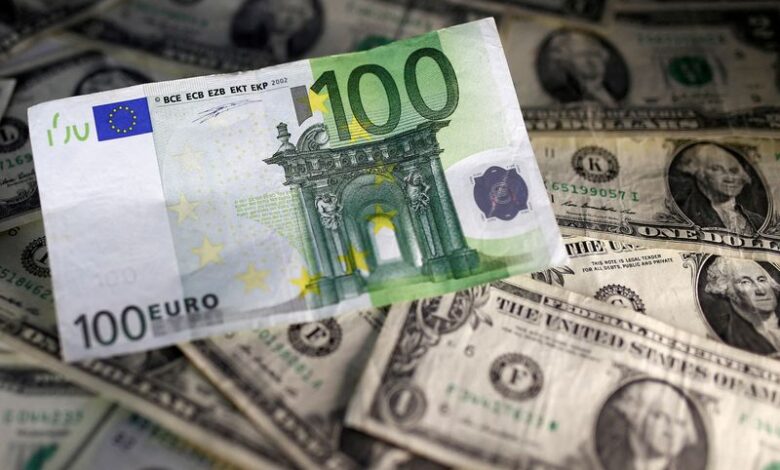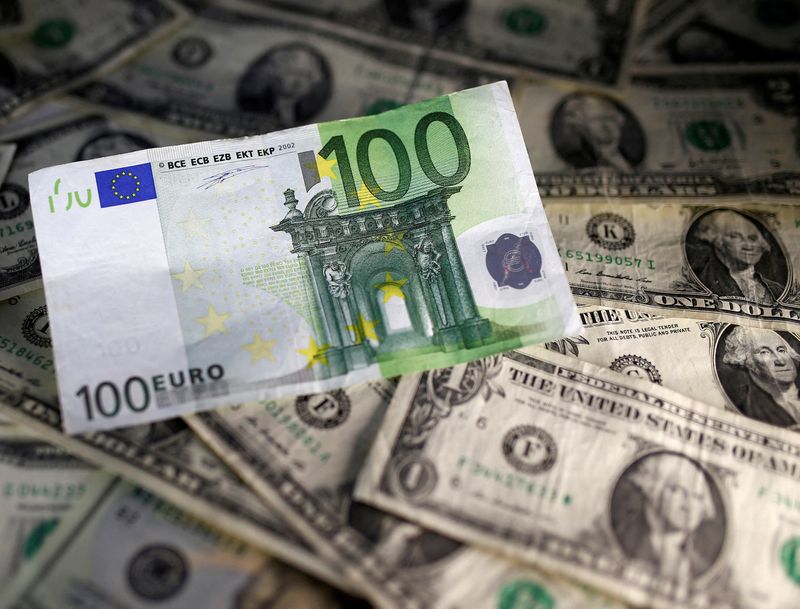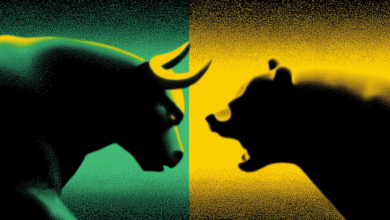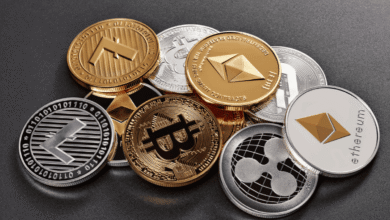ECB would welcome a weaker euro :Mike Dolan

By Mike Dolan
LONDON (Reuters) -The European Central Bank would happily, if quietly, cheer an even weaker euro exchange rate – and may be far more wary of the opposite at just the wrong time.
The euro is likely still too strong for the sort of subdued growth and outsize trade risks the zone faces next year and, far from being a brake on more monetary easing, its depreciation may well be encouraged. And it could argue for at least one deeper half-percentage-point interest rate cut at upcoming meetings.
The ECB meets next Thursday for the last time in 2024 and economists overwhelmingly expect another 25-basis-point rate cut – which would be the fourth such move this year.
Market thinking and the general thrust of ECB arguments are that the central bank has inflation more or less licked and should return to a neutral policy rate – somewhere around 2% if inflation holds at ECB targets. At that point it would simply sit and pray a cyclical recovery takes hold, while being alert to multiple political and trade risks unfolding through 2025.
ECB President Christine Lagarde basically sketched that scenario earlier this week in a European parliament hearing, despite a lively debate among her policymakers about bigger and faster rate cuts to get across a pervasive German-led economic funk.
If the gradualists hold sway, that suggests a quarter-percentage-point cut at every meeting until the middle of 2025 to get the current 3.25% deposit rate back to those rough estimates of “neutral”.
As such, at least 125 basis points of ECB expected easing contrasts with market pricing for half that from the U.S. Federal Reserve.
And yet many strategists claim that sort of Transatlantic divergence is already largely discounted by the euro/dollar exchange rate, which has dropped about 5% in two months. The euro’s nonchalant reaction to the week’s political drama in Paris suggests as much.
Morgan Stanley (NYSE:) on Thursday raised a red flag about the unintended consequences of a softly-softly approach from the ECB around next week’s expected rate cut and how that may pose “upside risks” for the currency.
“Markets are sufficiently bearish on the euro area outlook and the euro that any sign of unchanged messaging could be treated as a hawkish surprise,” it said.
AVOIDING A EURO REBOUND
The ECB has good reason to avoid a euro rebound just at this juncture – not least because the currency’s trade-weighted index is far higher than the swoon versus the dollar suggests.
Despite the euro being just 5% from dollar parity, which was last seen in the wake of Russia’s invasion of Ukraine in 2022, the ECB’s nominal euro exchange rate index against the bloc’s main external trading partners is still only 1% below all-time highs hit in September.
The inflation-adjusted real effective exchange rate index is not quite as lofty, due largely to the decade in which the bloc flirted with deflation after the 2008 global banking crash and 2010-2012 euro debt crisis.
But despite ebbing in recent months, it too is little changed from where it was 10 years ago – even after the serial shocks seen in recent years.
And for a region potentially facing 10%-20% U.S. tariff hits from President-elect Donald Trump’s incoming administration, a simmering bilateral trade row with China and a contraction in Germany, its export-dependent weakest link, currency depreciation would be a blessing.
Even if still-sparky wage growth remains an ECB irritant, that’s even more of reason for a weaker currency to recapture some competitiveness in a global trade war.
As euro consumer price inflation remains close to target and producer price deflation is still running at more than 3%, the ECB has ample scope to ease big.
And even if trade tariffs could skew the price outlook somewhat, the ECB’s chief economist, Philip Lane, has argued the growth hit from any trade war would be a much greater consideration than any temporary price-level bump from tariff hikes.
The only question in some minds then is whether a euro plunge through dollar parity would be in some way jarring for regional confidence, especially at a time of nervy German and French domestic politics.

But currency weakness is not the euro zone economy’s problem right now. Arguably, it’s the opposite.
The opinions expressed here are those of the author, a columnist for Reuters.
(by Mike Dolan X: @reutersMikeD; Editing by Paul Simao)



